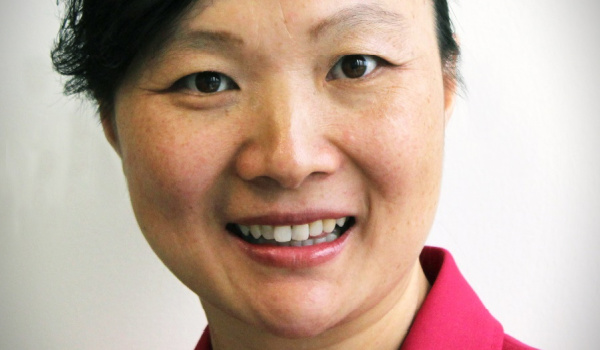Digital Wealth News is pleased to bring you our “Fintech Luminaries” series – featuring thought leaders within the digital wealth ecosystems. For our latest feature, we’d like you to meet Helen Yang of Andes Wealth Technologies, the first company to combine behavioral finance with risk analytics, to empower financial advisors to differentiate & deliver truly personalized services.
NAME: Helen Yang
TITLE: Co-founder & CEO
COMPANY: Andes Wealth Technologies
How did you personally become involved in fintech?
In 1999, long before “FinTech” became a buzzword, I joined Thomson Reuters as a senior software engineer and later took on the role of Enterprise Software Architect, where I led a team of engineers to build the second generation Autex Trade Route platform, one of the world’s largest FIX-based order routing networks connecting 850 buy side firms and 600 brokers. It was intellectually satisfying to build mission critical systems of high performance and reliability. Last I heard, the system we built twenty years ago is still in production.
From there I tried product management and client implementation at Charles River Development (now part of State Street) and Vestmark, but I kept having doubts about the real value of financial services. I decided to take a few years off to do an MBA, and to make the time off worthwhile, taking care of the CFA as well just in case.
I was lucky enough to get into the prestigious Sloan Fellows program at MIT, where I met Dr. Andrew Lo, who made finance the most fascinating thing in the world. And I also realized that FinTech is as green of a pasture as anything else.
What does your firm do/offer within the fintech sector?
Andes Wealth Technologies is the first company to combine behavioral finance and risk visualization to help financial advisors deliver truly personalized services.
People talk a lot about behavioral finance, but there wasn’t an easy way to use it systematically until we came along. Our patent-pending methodologies first break down investor behavior into a set of factors such as the investor type and behavioral biases, each of which is independently assessed, and then roll them up into the Behavioral Risk Index™, a single number from 0-10 that indicates how likely a client may respond irrationally to market turmoil.
But we can’t talk about behavior in a vacuum. Financial advisors need to deliver real insights in investments to support the conversation on emotions and biases. This is where our real-time deep analytics comes in, delivering real insights that people can’t get from CNBC and Yahoo! Finance. The visualization is especially helpful to facilitate in-depth conversations during market turmoil.
Deep analytics and its visualization is a real innovation. We are a finalist of the 2021 Wealth Management Industry Award in the Portfolio Analytics category.
A lot of what we do is inspired by Dr. Andrew Lo from MIT and his Adaptive Markets Theory that reconciles behavioral finance with efficient markets. I worked with him and we shared the Harry Markowitz Award in 2011. Harry Markowitz is the father of Efficient Markets and a Nobel Prize laureate.
There are a few other things we do that may not be as revolutionary but perhaps more indispensable.
First, the risk tolerance test. We have been a finalist in the Wealth Management Industry Award in the Risk Tolerance/Client Profiling category for two years in a row.
Second, the Investment Policy Statement (IPS). We have the best IPS generator on the market.
Third, we provide a way for financial advisors to better protect baby boomer clients.
Putting everything together, Andes Wealth Platform is a powerful client onboarding and communications platform. But more importantly, it is a new way to deliver wealth management. We are the differentiation the industry has been looking for.
What is your role within your firm and what do you do there on any given day?
I am the founder and CEO of the company. We are a small firm so everyone wears multiple hats.
My day starts everyday at 8 am, meeting with our engineering team in Romania over Skype. I am passionate about product development and spend a lot of time reading, thinking, and talking to clients and thought leaders to validate ideas and get feedback. I am also the enterprise solutions architect and business development executive. Until early 2021 when we hired a top-notch marketing consultancy, I also did much of the marketing and built the company website.
This journey of entrepreneurship made me realize that everything had a purpose. Reflecting on my career, I thought I wasted a lot of time with all these different roles, but all the experiences I had turned out to be useful when building this company, from building integrations to investigating data issues. It took myself by surprise that I had so many useful skills.
Our small team is incredibly productive, which has enabled us to accomplish so much with the limited resources we have.
What area/s of fintech do you believe will grow the most in the coming 5 years?
There is a growing consensus in the industry that we have solved the investment problem, and we are just starting to solve the investor problem. Behavioral finance holds the key to better understand investor behavior, and I believe that the adoption of behavioral finance concepts and tools will grow significantly in the next 5 years.
While our tool focuses on helping investors reduce irrational behavior during market downtown, behavioral finance is much broader than that. For example, it can be used to help people develop better spending and saving habits, which is even more essential.
In the podcast Standard Deviations hosted by Daniel Crosby, Chief Behavioral Officer at Orion Advisor Solutions, Jeff Kreisler, Head of Behavioral Science at JP Morgan, talked about how credit cards and “one-click checkout” reduce the pain of paying and encourage overspending, while automatic 401K contributions encourage good behavior.
Richard Thaler, a Nobel Prize winning behavioral economist, wrote a book called Nudge, a technique that uses behavioral science to guide people towards better decisions while preserving the freedom of choice. The book opens with an example of the school cafeteria, where certain food display arrangements can encourage students to choose more fruit and salad and less desserts.
The good news is that people are nudgeable, and I look forward to the wider adoption of behavioral science to guide people towards better decisions.







